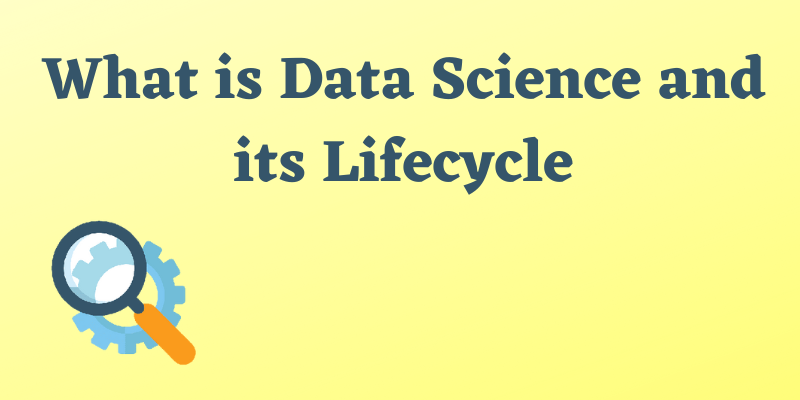
Data science is a general study of data to gain essential business insights. It is a multidisciplinary method for analysing massive volumes of data that integrates ideas and techniques from mathematics, statistics, artificial intelligence, and computer engineering. To know more about What is Data Science and its Life Cycle, Join the best Data Science Course in Chennai at FITA Academy to learn about Data Science with a course completed certificate and excellent placement.
Lifecycle of Data Science:
Creating a Business Issue
Any data science issue will begin with the formulation of a business issue. The challenges that might be resolved with the basic knowledge obtained from a successful Data Science solution are explained by a business problem. You have sales data for a retail store going back a year. This is a straightforward example of a business challenge.
Using machine learning techniques, you must forecast the store’s sales over the next three months. This enables the retailer to build an important inventory that reduces the wastage of goods with shorter shelf life than other goods.
Extraction, transformation, and loading of data
Creating a data pipeline is the following data science life cycle phase. In this step, the pertinent data is taken from the source, translated into a machine-readable format, and then loaded into the programme or machine-learning pipeline to get things going.
For the scenario mentioned above, we will need data from the shop to help create an effective machine-learning model to estimate sales. In light of this, we would generate distinct data points that might or might not be influencing the sales for that specific store.
Preprocessing of Data
The magic happens in the third phase. We will produce relevant data using statistical analysis, exploratory data analysis, wrangling, and manipulation. Preprocessing is done to examine the various data points and provide hypotheses that best explain the relationship between the various elements in the data.
For instance, the data must correspond to the time series format to forecast store sales. The series stationarity will be examined by hypothesis testing, and further calculations will reveal numerous trends, seasonality, and other related patterns in the data.
Data Modelling:
This step uses advanced machine learning algorithms to select features, convert features, standardise and normalise data, etc. In the preceding example, you may construct a model to generate an accurate forecast for the specified months by picking the best algorithms based on data from previous phases.
We can use the time series, which helps forecast a business problem that contains high-dimensional data. To forecast sales for the upcoming quarter, we’ll develop a forecasting model that includes an AR, MA, or ARIMA model and additional dimensionality reduction techniques.
Gathering Actionable Insights
The Final and essential stage of the data science life cycle is gaining insights from the previous challenge. We derive findings and results from the entire process that most effectively explain the business issue.
Enroll in your schedule’s Data Science Online Course to learn more about Data Science.
Solutions For the Business Problem:
The only things the business challenges are practical insights supported by data are actionable insights. As an illustration, our projection based on the time series model will provide a reliable estimation of the shop sales for the following three months. The store can plan its inventory using such data to minimise the loss of perishable goods.
Conclusion:
You will have understood Data Science and its Life Cycle in this blog. To get expert training from professional trainers, Join Data Science Courses in Bangalore to get a strong foundation in Data Science.
